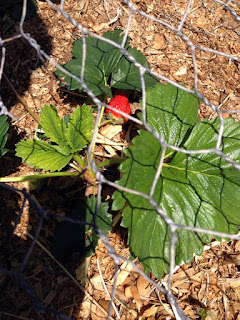Our last attempt was thwarted as it was too heavy for us to get into position to pre-drill the holes.
So I made a template of the bracket and hole positions and drilled the holes into the perpendicular beam that is already in place. (After checking and checking etc etc a zillion times as steel doesn't allow for errors of even a millimetre.)
Being too cheap to hire any type of mechanical lifting device, I knocked up an adjustable tripod in about an hour and a half and used this to support one end of the beam whilst the two of us focused on the tricky end.
I found a use for all of my used cutting disks - as washers!
Once the tripod was in position, one of the "L" brackets was bolted in position, the beam hoisted over it and the second "L" brackets fitted and bolted in place. After I'd finished with the tripod it was dismantled so all the parts could be re-used.
Then back down at the other end the steel tube support post was put under the beam and welded in place:
So I now finally have a fully supported interior space.
How it will hopefully look (viewed from kitchen window):
It was a relief to get this part finished.
While I was inside doing the welding Paul offered to take my brand new (early Xmas present) lawnmower for a spin and he cleared around the veggie garden and made a path down to the dam. (The grass is already over knee height and I needed a clear path to take the water pump down to the dam every now and then.)
While he was mowing a path around the near edge of the dam he was suddenly shocked when a large red belly black snake shot out from under the mower and made off into the long grass. Fortunately the mower is on its highest setting so it escaped unscathed.
Rhubarb is coming along nicely:
and I have just started collecting my first strawberries:
Quite exciting for someone who has never had their own garden let alone ever grown any of their own foodstuffs! I have also newly planted pumpkins (2 varieties), rocket, capsicums, beetroots and basil to go with the rhubarb, garlic, mint, strawberries and chives.
But now I must get cracking on the build again!






















































